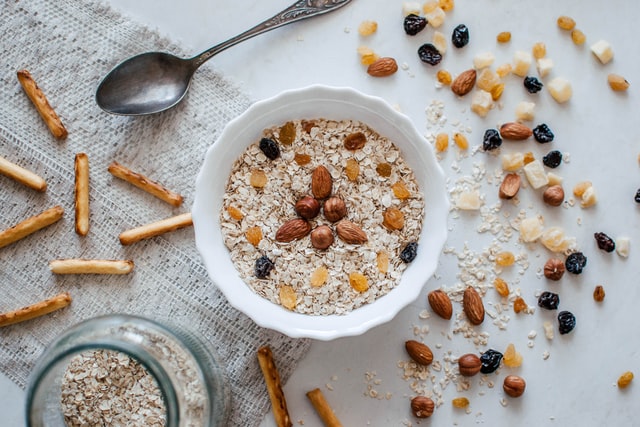I’m sure you’ve heard the phrase “eat more fiber” or seen foods advertised as being “high in fiber”. But what is fiber and what role does it play in our bodies? Fiber is a type of carbohydrate that we can’t digest. There are two types of fiber, soluble, which dissolves in water, and insoluble, which does not. Each is beneficial for our health, so it is important to incorporate both in our diets.
Roles of Fiber
The most notable role of fiber is that it helps to normalize bowel movements and maintain bowel health (link to resource). This is particularly from insoluble fiber, as it helps move food through our digestive system due to the fact that it does not dissolve in water. Soluble fiber, on the other hand, can help to lower cholesterol levels and regulate blood glucose levels (source). In addition to that, high-fiber foods take longer to digest, so they can help us feel fuller longer, and even assist in maintaining a healthy weight.
Fiber Sources
In order to incorporate more fiber in your diet, you may want to include foods such as fruits and vegetables, beans, peas, legumes, nuts and seeds, and whole grain products. It is important to have a wide variety of high-fiber foods in order to integrate both soluble and insoluble fiber. Soluble fiber is found in foods such as oats and oat bran, wheat bran, nuts, seeds, beans, lentils, and peas. In contrast, insoluble fiber foods consist of whole wheat products, quinoa, brown rice, legumes, leafy greens, and fruits with edible peels (source).
Processed foods like white breads and pastas, and canned fruits and vegetables are not a good source of fiber as the refining process lowers the fiber content by removing the outer portion of the grain (source). Some other foods, such as cereals, granola bars, and yogurt, include added fiber. These can be incorporated into your diet to improve your fiber consumption.

Recommended Fiber Intake
The recommended fiber intake for women is between 21 to 25 grams of fiber per day (source). If you do not believe you are including enough fiber in your diet, there are certain ways that can help you consume more. For example, make your snacks count by snacking on raw fruits and vegetables, whole grain crackers, granola bars, or even a handful of nuts. Similarly, jump start your day by including a high-fiber source in your breakfast. Also, make half of the grains that you consume whole grains, and look for breads that are labeled as whole wheat.
Although consuming enough fiber is essential for our health, consuming too much, or increasing fiber intake too quickly, may cause some unpleasant symptoms. These may include bloating, gas, abdominal pain or cramping, etc. (source). In order to avoid this, increase your fiber intake gradually over multiple weeks, as this allows our digestive system to adjust.
If you have more questions regarding the importance of fiber, fiber intake, or fiber sources, schedule a call with Alli here.
This article was written by Emma Bulan, nutrition intern. Fact checked by Allison Tallman RD.
